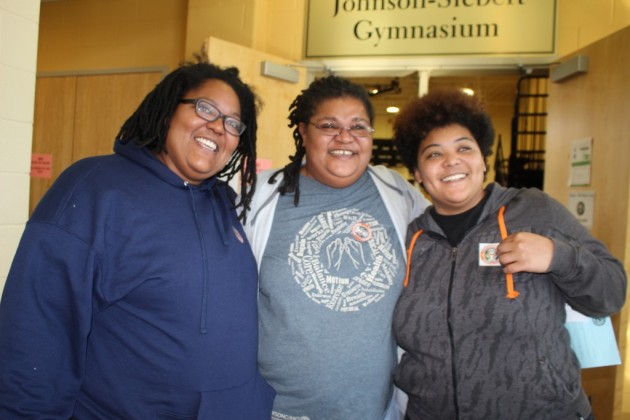A Look at the History, Traditions Behind a Spooky Day
For decades in the United States, Halloween has been celebrated as the day when people of all ages dress up in festive and frightening costumes and children go door to door in hopes of collecting a fortune of candy and goodies. But this holiday has grown to be a lot more elaborate than it has been historically.
Halloween has taken on many faces. The trick-or-treating tradition became most prevalent in the United States each year on Oct. 31. As time went on, neighborhood trick-or-treating turned into mall trick-or-treating where children walk from store to store collecting candy in shopping malls.
Another alternative is group trick-or-treating. Angela Parks, mother of a 6-year-old in Washington, D.C., says that trick-or-treating in groups is safer and more fun for the children.
“My son loves it” Parks said, “and it’s convenient for the parents also.”
For the older crowds, costume parties on a neighborhood block or at a local club are preferences. Anita Johnson, a single mother of three, enjoys the social scene that costume parties provide.
“Seeing all the different costumes and meeting all kinds of creative people is what’s most fun for me,” Johnson said. (Also see below: Trick or Treat Detours: Alternatives to Ringing Doorbells on Halloween and Halloween Heels: Running a Two-Block Race in Three-Inch Stilettos.)
Originally a pagan celebration of the Celts in Ireland called “Samhain,” the holiday was a celebration of the harvest and the spirits of the deceased. In the pre-Christian Irish celebration of Samhain, the Celts celebrated the end of the summer with a feast and festival. During the “fire festival” or feast, the dead would revisit the mortal world and the large bonfires would be lit to keep away evil spirits.
The name Halloween or Hallewe’en, as it was formerly spelled, comes from the phrase “All Hallow Even,” which means “the evening of/before.” This day was recognized in the Catholic church as a day to celebrate the lives and accomplishment of saints.
In an attempt to assimilate the Celtic culture, Pope Gregory IV moved “All Saints Day” or “All Hallows’ Day” to Nov. 1 in the name of the Western church in the year 835. Although, no historical evidence indicates that the Celtic practices were incorporated into the Catholic culture, their monuments were kept intact and over time the two traditions blended together.
The holiday traveled from Europe to North America in the 19th century. In keeping with other major holidays, Halloween began to be commercialized in the 20th century. Its commercialization began with postcards, then costumes and candy shortly afterward.
The costumes that adorn the bodies of many American children on Halloween come from the Irish tradition of dressing like spirits and beings of the underworld. During the ancient Samhain holiday, children dressed in costumes to blend in with the other world visitors while they went to neighbors’ homes collecting fruits, nuts and sweets for the festival.
Since the 1930s, the Celtic tradition of wearing costumes has turned into a nationwide competition with costume parties and contests of authenticity and creativity. The National Retail Federation reported that for 2006 the princess costume was most popular for children and the witch costume was most popular among adults.
In the United States, Halloween has become so popular that it ranks sixth among holidays that yield the most profit. According to the National Confectioners Association, last year’s Halloween-themed candies had a 2.8 percent sales increase from the previous year.
Even old American pastimes such as visiting theme parks have their hand in the Halloween market. Along with many competitors, Universal Studios’ theme parks celebrate Halloween Horror Nights, which are said to be among the most elaborate Halloween celebrations in the country. Their combination of simulated haunted towns, mazes and horror movie characters attract millions of visitors every year.
States like Massachusetts and Minnesota compete for the title of “Halloween Capital” with such attractions as ghost hunting, haunted tours and encounters with modern-day witches.
Witches are also big in other parts of the world. In Latin America, for example, the people celebrate “Noche de las brujas” or “Night of the Witches” and “Dia de los muertos” or “Day of the Dead.” On this day, the spirits of deceased saints and ancestors may return to earth. Those who celebrate the day offer the favorite foods and flowers of their deceased loved ones to appease the spirits.
In Chinese culture, the Ghost Festival is celebrated to acknowledge the spirits of ancestors and those have past away. On the 14th day of the seventh lunar month, spirits and ghosts from the underworld are said to return to earth.
Once a sacred harvest festival that acknowledged the souls of the deceased in Ireland, Halloween has become a major holiday and a large part of the culture in the United States.



